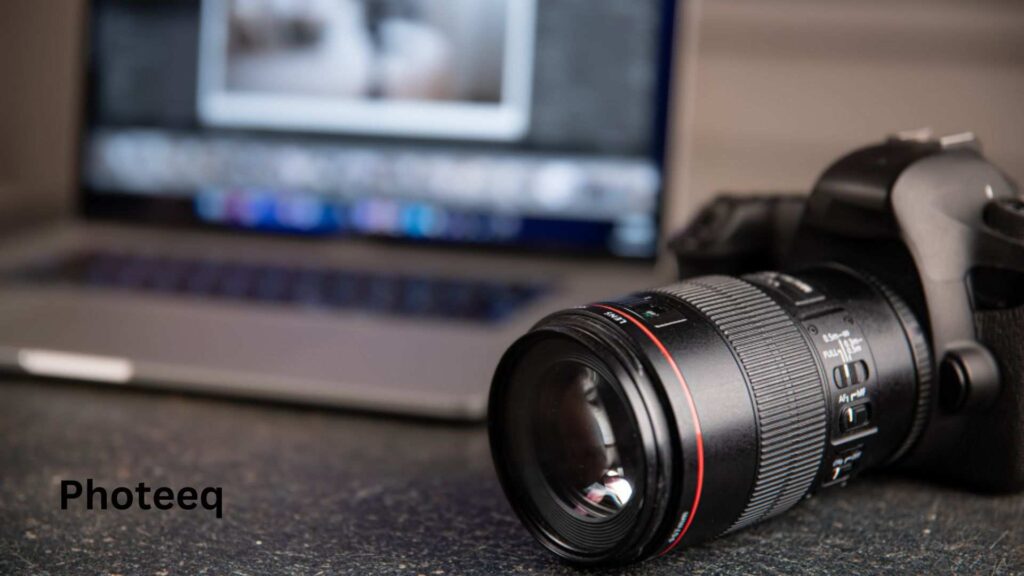Welcome to the universe of photography! Whether you are a novice or an accomplished photographic artist, there is continuously a new thing to learn and investigate in this consistently developing work of art. With headways in innovation and the accessibility of different devices and procedures, photography has become more open and adaptable than at any time in recent memory. Notwithstanding, with so many choices and potential outcomes, it tends to be overpowering for photographic artists to explore and dominate various classes of photography. This is where Photeeq comes in – a complete aide that digs into the complexities of long-openness, synthesis, and untamed life photography. In this article, we will bring a profound plunge into these three major areas of photography with Photeeq and furnish you with the information and abilities to catch staggering pictures that recount a story and summon feelings.
Long-Exposure Photography: Capturing the Unseen
Long-openness photography is a strategy that includes utilizing shade velocities of a few seconds or even minutes to catch a picture. It permits picture takers to make extraordinary and dazzling pictures by purposefully obscuring moving components in a scene. This procedure tracks down wide applications in different kinds of photography, including scenes, cityscapes, and astrophotography. We ought to investigate the different kinds of long-openness photography with Photeeq and how they can be accomplished
Light Trails: Bringing Cityscapes to Life
One of the most popular purposes of long-openness photography with Photeeq is catching light ways in cityscapes. By using a sluggish shade speed, photographic artists can change moving light sources, like vehicles and streetlights, into dynamic dashes of light. This strategy adds a feeling of dynamism and energy to the picture, making it all the more outwardly engaging. To accomplish this impact, you will require a stand to keep your camera consistent, a remote screen delivery or clock to stay away from the camera shake, and an impartial thickness (ND) channel to lessen how much light entering the camera. Here are a few methods for catching shocking light paths:
- Pick an area with Photeeq where there is a ton of traffic or moving lights.
- Utilize a low ISO setting (100-200) to lessen the clamor in the picture.
- Try different things with various shade rates to accomplish various impacts – longer screen velocities will bring about longer light paths.
- Attempt various points and viewpoints to add interest to your synthesis.
Water: Revealing the Hidden Beauty
Long-openness photography likewise offers an exceptional method for catching the magnificence of water moving. By utilizing a sluggish shade speed, photographic artists can make a marvelous and ethereal impact, turning streams, cascades, and waves into entrancing scenes. This strategy is especially helpful in scene photography, where water is a conspicuous component. To accomplish this impact, you will require a mount, a remote screen delivery or clock, and an ND channel. Here are a few methods for catching staggering long-openness water pictures:
- Pick an area with intriguing water highlights, like cascades or crashing waves.
- Utilize a low ISO setting to decrease commotion.
- Try different things with various screen rates to accomplish various impacts – slow shade velocities will bring about a smoother and more obscured look.
- Consider utilizing a polarizing channel to decrease glare and upgrade the shades of the water.
Astrophotography: Capturing the Wonders of the Night Sky
Long-openness photography is likewise generally utilized in astrophotography to catch the excellence and secret of the night sky. By utilizing a sluggish screen speed, photographic artists can catch star trails, which are made by the World’s revolution. This method requires a ton of tolerance and arranging, however the outcomes can be stunning. To accomplish this impact, you will require a solid stand, a remote shade delivery or clock, and a wide-point focal point with a quick opening. Here are a few methods for catching staggering star trail pictures:
- Pick an area with negligible light contamination and a reasonable perspective on the night sky.
- Utilize a high ISO setting (800-1600) to catch more stars.
- Try different things with various shade speeds – longer openings will bring about longer star trails.
- Think about involving a star tracker for additional exact and longer openings.
Composition Photography: Telling a Story Through Your Images
Synthesis is a fundamental part of photography that can represent the moment of truth in a picture. It alludes to how components are organized inside the casing and how they communicate with one another. A very much-formed photo can recount a story, bring out feelings, and have an enduring impact on the watcher. In this part, we will investigate the standards of organization and how they can be applied to make convincing pictures.
Rule of Thirds: Finding Balance and Harmony
The standard of thirds is one of the most fundamental and broadly involved creation procedures in photography. It includes partitioning the casing into three equivalent parts both evenly and in an upward direction, making nine equivalent segments. The thought is to put the primary subject or focal points at the convergences of these lines or along the actual lines. This strategy makes equilibrium and amicability in the picture and makes it all the more outwardly engaging. Here are a few ways to utilize the standard of thirds:
- Empower the gridlines on your camera to assist you with picturing the lines and convergences.
- Place the primary subject askew to make a more unique piece.
- Utilize driving lines to direct the watcher’s eye toward the principal subject.
- Explore different avenues regarding various points and viewpoints to add interest to your organization.
Symmetry and Patterns: Creating Order in Chaos
Evenness and examples are strong compositional devices that can add a feeling of request and equilibrium to a picture. They can be tracked down in nature, design, and regular articles, and when caught really, they can make striking and outwardly engaging pictures. To involve evenness and examples in your structures, remember the accompanying tips:
- Search for even components in your environmental factors, like reflections or rehashing designs.
- Utilize a mount to keep your camera consistent and guarantee that the lines are impeccably adjusted.
- Try different things with various points and viewpoints to add profundity and interest to your picture.
- Think about utilizing a wide-point focal point to catch a greater amount of the evenness or example.
Framing: Adding Depth and Context
Outlining is a procedure that includes utilizing components inside the scene to approach the fundamental subject. It adds profundity and setting to the picture and can draw the watcher’s eye towards the subject. This strategy is especially valuable in scene photography, where normal components, like trees or shakes, can be utilized as casings. Here are a few methods for involving outlining your pieces:
- Search for regular casings inside the scene, like curves, entryways, or tree limbs.
- Utilize a thin gap (high f-stop number) to keep both the closer view and foundation in the center.
- Try different things with various points and viewpoints to track down the best casing for your subject.
- Think about utilizing a zooming focal point to pack the components and make a more grounded outline.
Wildlife Photography: Capturing the Beauty and Majesty of Nature
Natural life photography is a difficult yet remunerating class of photography that requires persistence, expertise, and a profound comprehension of creature conduct. It offers a one-of-a-kind chance to catch the magnificence and greatness of nature and share it with the world. In this segment, we will investigate the procedures and hardware expected to catch shocking natural life pictures.
Equipment: Choosing the Right Gear
With regard to natural life photography, it is essential to have the right stuff. Not at all like different classifications of photography, you have no control over or direct your subject, so you should be ready for any circumstance. Here are a few fundamental bits of gear for untamed life photography:
- Camera: A DSLR or mirrorless camera with a quick burst rate and great self-adjust execution is great for catching quick creatures.
- Lens: A zooming focal point with a central length of something like 300mm is fundamental for having close-up chances of natural life without upsetting them.
- Tripod or Monopod: These are valuable for keeping your camera consistent and decreasing camera shake, particularly while utilizing longer focal points.
- Bean Bag: A bean pack can be utilized as a stopgap support for your camera while shooting from a vehicle or low to the ground.
- Remote Shutter Release: This permits you to set off the shade without contacting the camera, lessening the gamble of camera shake.
- Flash: A glimmer can be valuable for filling in shadows or adding catchlights to the eyes of your subject.
Techniques: Getting Up Close and Personal
Natural life photography with Photeeq requires an unexpected methodology in comparison to different kinds of photography. You can’t immediately represent your subject, so you should be patient and perceptive to catch the ideal shot. Here are a few procedures to assist you with getting very close to untamed life:
- Research: Before going out to photo natural life, would some examination on the species you like to catch? Find out about their way of behaving, living space, and examples, which will assist you with expecting their developments and have better chances.
- Be Patient: Untamed life photography with Photeeq requires a great deal of persistence. You could have to trust that hours or even days will catch the ideal shot, however the outcomes will merit the work.
- Use a Telephoto Lens: As referenced previously, a zooming focal point is fundamental for catching natural life pictures. It permits you to have close-up chances without upsetting the creatures.
- Shoot in Burst Mode: Creatures are continually moving, so shooting in burst mode will build your possibilities of catching the ideal second.
- Be Respectful: While shooting untamed life, consistently make sure to regard their space and never upset or mischief them for a photo.
Conclusion: Elevate Your Photography with Photeeq
All in all, photography is a lovely and consistently developing fine art that offers vast opportunities for imagination and self-articulation. With Photeeq, we have investigated the procedures and standards of long-openness, structure, and natural life photography, outfitting you with the information and abilities to lift your photography game. Make sure to continuously continue picking up, testing, and propelling yourself out of your usual range of familiarity to catch staggering and reminiscent pictures that have an enduring effect. Blissful shooting!




